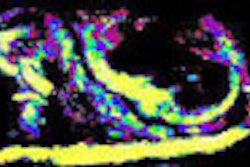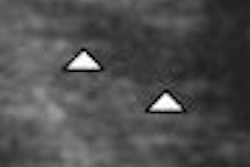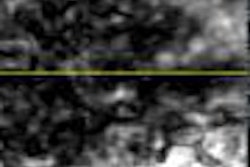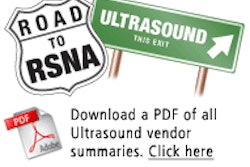Using echocardiography to assess maternal hemodynamics and left ventricular geometry in pregnant women with a gestational age of 24 weeks may predict maternal and fetal complications, according to research published online in Hypertension.
"Thus, if these results will receive further confirmation, the echocardiographic analysis of maternal cardiac morphology and vascular function may be of help for the solution to the problem of the false-positive rate of the uterine artery Doppler screening test, which normally concerns the obstetrician," wrote a team of researchers from Tor Vergata University in Rome and San Sebastiano Martire Hospital in Frascati, Italy (Hypertension, February 7, 2008).
Seeking to evaluate the predictive value of elevated total vascular resistance (TVR) on the outcome of pregnancy in patients with bilateral notching of the uterine artery, the Italian researchers studied 526 high-risk primigravidas referred to an obstetrics outpatient clinic between 2002 and 2006. These patients received a maternal echocardiographic examination at 20 to 22 weeks gestation and uterine artery Doppler evaluation at 24 weeks gestation.
Ultrasound exams were conducted using a 3.5-MHz sector ultrasound transducer with either a Xario scanner (Toshiba Medical Systems, Tokyo) or a Technos Esaote (Esaote, Genoa, Italy). Blood pressure was recorded at the time of the examination, and TVR was calculated. The geometric pattern of the left ventricle was also assessed, according to the authors.
The patients were then tracked until the end of pregnancy to detect fetal and maternal adverse outcomes, including gestational hypertension, preeclampsia, placental abruption, fetal growth restriction, and perinatal death.
There were 111 pregnancies that showed a persistent bilateral notch at 24 weeks gestation, and 97 (18.44%) of the patients in the study had an adverse outcome. The researchers found that TVR was the best independent predictor for maternal and fetal complications (odds ratio: 91.25, 95% confidence interval (CI), p < 0.001). With a cutoff value of 1400 dynes·s·cm-5, sensitivity was 89% and specificity was 94%.
"The novel finding of this study is that TVR seems to be the best screening test for complications in normotensive high-risk 24-weeks primigravidas, giving better results compared with the standardized uterine Doppler ultrasound evaluation usually performed by obstetricians," the authors noted.
Other independent predictors (p < 0.05) included a high relative wall thickness (> 0.37) of the left ventricle (odds ratio: 2.47, 95% CI), and a hypertrophized ventricle (left ventricular mass > 130 g; odds ratio: 2.52, 95% CI).
The maternal vascular function and cardiac morphology of pregnant patients destined to have complications differ from those headed for a normal pregnancy outcome, the authors concluded. These cardiovascular dissimilarities might then be used to reliably classify these patients, particularly through the use of TVR, they stated.
"We think that, if these data receive further confirmation, the next step should be the application of maternal echocardiographic parameters to the therapeutic management," the authors wrote.
By Erik L. Ridley
AuntMinnie.com staff writer
March 5, 2008
Related Reading
Doppler US predicts severe complications in risky pregnancies, February 3, 2005
Ultrasound alters management of infants with genitourinary disorders, October 14, 2004
Embryo and Fetal Pathology: Color Atlas with Ultrasound Correlation, October 13, 2004
Part II: The psychological impact of 3D ultrasound on pregnant women, December 30, 2003
Part I: The psychological impact of 3D ultrasound on pregnant women, December 29, 2003
Copyright © 2008 AuntMinnie.com



















